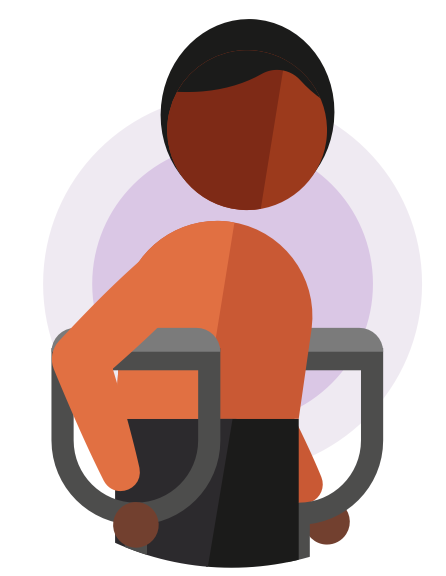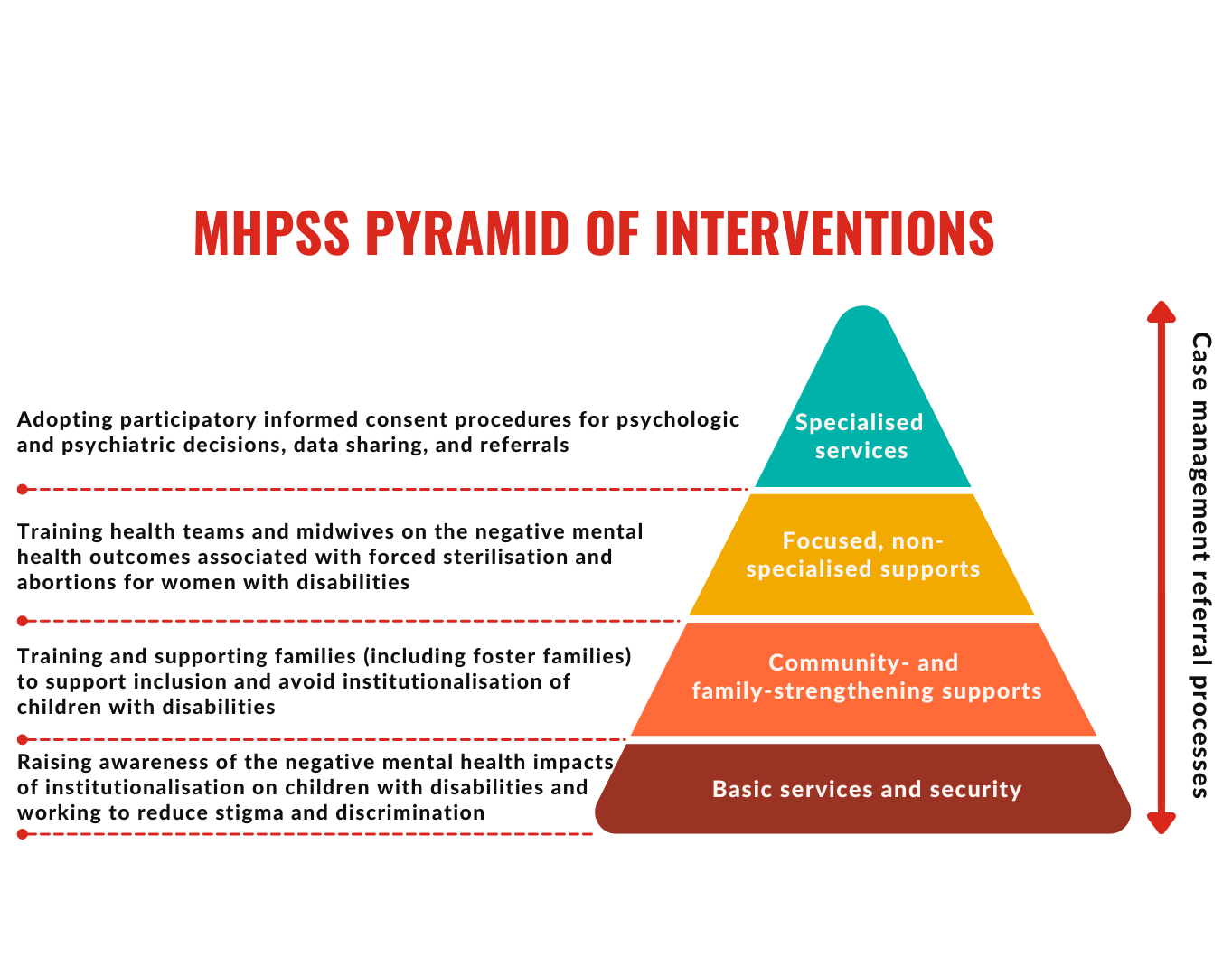Disability Inclusion
MHPSS RECOMMENDATIONS FOR CROSS-SECTORAL THEMES
Children and caregivers who have physical, sensorial, intellectual and/ or psychosocial disabilities often experience discrimination, exclusion, and other rights violations that cause high levels of personal and familial distress.
Read the summary below or access the full guidance.

Children and families can live with a wide range of disabilities: physical, sensorial intellectual and psychosocial. All types of disability, however, increase children’s risk of discrimination, exclusion and rights violations. These risks can result in segregation, confinement, restraints on children’s autonomy, threats to their physical and mental integrity, and high levels of distress.[1]
Accessible MHPSS activities must identify and address the attitudinal, environmental, institutional, financial and communication barriers that prevent children with disabilities and caregivers with disabilities from participating in relevant programming. Children and caregivers with disabilities should be consulted from the beginning of programme development and throughout all stages of the programme cycle.

[1] IASC (2019) Guidelines on inclusion of persons with disabilities
Key Resources:
- IASC Guidelines: Inclusion of Persons with Disabilities in Humanitarian Action, 2019
- SCI has referral guidance in line with Step to protect common approaches.
- SCI has developed resources accessible to all on children with disabilities in safe spaces and inclusive play or learning through play to decrease inequities
